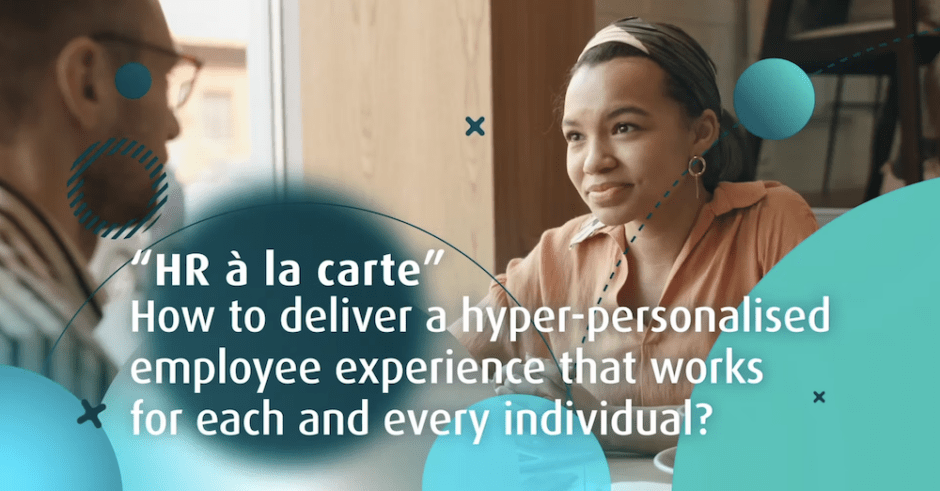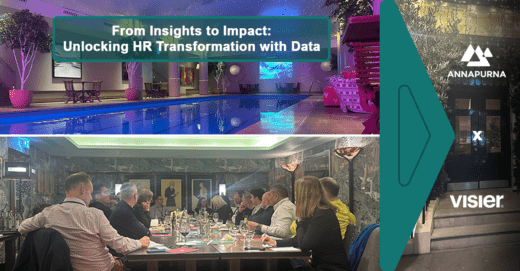Never before have we learnt so much about our employees in a period of time, from their families to their homes to their routines. The ‘big realisation’ is not solely a case whereby employees are starting to understand exactly what they want from a role/organisation but also from an organisations point of view, what needs to be in place to attract, engage and retain talent.
The BTN was delighted to partner with HR workforce management solutions leader, UKG, for a fascinating discussion with people leaders around creating hyper-personalised employee experiences. The session was hosted by Emma Parry (Professor of Human Resource Management at Cranfield School of Management) & Remi Malenfant (Director of HR Innovation and Customer Experience at UKG), who brought the open and interactive conversation to life, bringing about the following takeaways:
Remi introduced the group to the concept of hyper-personalisation and how bringing together workforce management and HR service delivery is no longer just HR topics, they are important to employees and managers. What are the priorities for HR? What impact should we be having on the employee experience?
Create efficiencies by doing the basics right
There are plenty of industries and organisations which are still considered ’traditional’ and have yet to reap the full benefits of technological advancements, whether that be within their customer proposition or their internal employee experiences. Emma Parry led the conversation around what some of the leaders around the table were doing to create digital employee experiences. How do we get the admin of HR out the way so the time people spend with people is actually to do with people and not on the process? We should get Maslow’s bottom layer of the hierarchy of needs out the way to ensure we can focus on value. Get the digital processes right and we can then focus on the people aspects and ensuring it is ‘easy’ for our employees to get what they need. The group discussed the utilisation of Robotic Process Automation (RPA) as a means to use technology to ensure the basics are done regularly and effectively. If we ensure the basics are running then we can start to evolve our offering.
Don’t get dazzled by the tech, think about what you need to do.
At the heart of everything organisations do, there should be a culture that is built on trust, learning, collaboration and psychological safety. This can only be created if the leaders within organisations have consistent messaging and are given the freedom/empowerment to grow their teams. If our leaders are doing what they should be doing, leading, then they will also be understanding of where the pain points of the employee experience are. There is a statement that ’the biggest reason why people leave if the relationship they have with their line manager’. Therefore, when we talk about the experience that an employee has, would they rather have their line manager spending time with them rather than having an experience that is corporate and generalised? What do employees actually want that is customised? Managers need ease of delivery to deliver the culture we want to deliver and if we can hyper-personalise the experience through management/leaders and ensure we are giving our managers the tools to enable them to deliver fair and equitable experiences. Senior leaders were definitely more ‘visible’ during the pandemic, which allowed them to be clearer about their expectations and provided a more in-tune experience with their colleagues. The conversation moved onto how HR should be aligning the external customer-centric process that our businesses have and try to align our HR processes in the same mindset to create journeys that our employees expect from the digital experiences they engage with on a day to day basis. When looking for new technology providers to help improve any element of the employee experience, providers will regularly say that they can do it all but in fact, the delivery is regularly substandard. The technology/vendor that we choose should fit the culture of the business, rather than trying to force the business to adopt something that doesn’t align.
If you really want to support someone, you need to provide personalisation throughout the experience
As leaders, our approach should always be thinking about what/where we should personalise the experience of our employees more. Where should our focus be? People want to feel like it’s easy and for them to do the basic HR processes yet don’t want everything to be standardised. The rapid evolution of the hybrid workforce since the pandemic hit has meant that organisations no longer just need to create experiences just for the office but create experiences that are truly digital that provide the same experience whether you are in the office or at home or blending between them both. This move creates the possibility that fairness may not be prioritised as we focus on ensuring that the experiences are seamless. The question was asked whether there was a risk to equity if we go down the personalisation route? Creating a truly personalised experience can only be possible by firstly understanding your organisation and its employees through the gathering of data. Gathering the data is all well and good but we must be able to strip it out, analyse it and then use it effectively. There was a conversation around the table about utilising User Experience (UX) researchers within HR to spot pain points within the employee experience and engage people through transforming data into action. The data will help you work out where to have an impact. What we personalise should always be defined by what we think should be personalised and backed up by the data. Think about where the value is and then do it brilliantly. How does what we are doing as a business make a difference to the business?
The employee experience is being driven across organisations at the moment due to the shortage of talent but if the cost was the most important factor, rather than attraction & retention, would the personalised experience journey get traded off? Or do certain groups get prioritised for their journey? Technology isn’t the biggest difference between organisations with a good employee experience and those without but it is the enable to allow us to make the biggest difference. Can we use technology to ensure we can provide the same digital experience when at home versus when at the office? Creating data-driven positive employee experiences will only work by not just looking at people’s preferences but looking at their situation and personalising alongside giving support when circumstances are different. If we don’t personalise, we will lose employees to competitors. If we focus on 1 area, we will lose employees to competitors. We need to focus on the end to end journey and ensure our employees feel truly valued.



